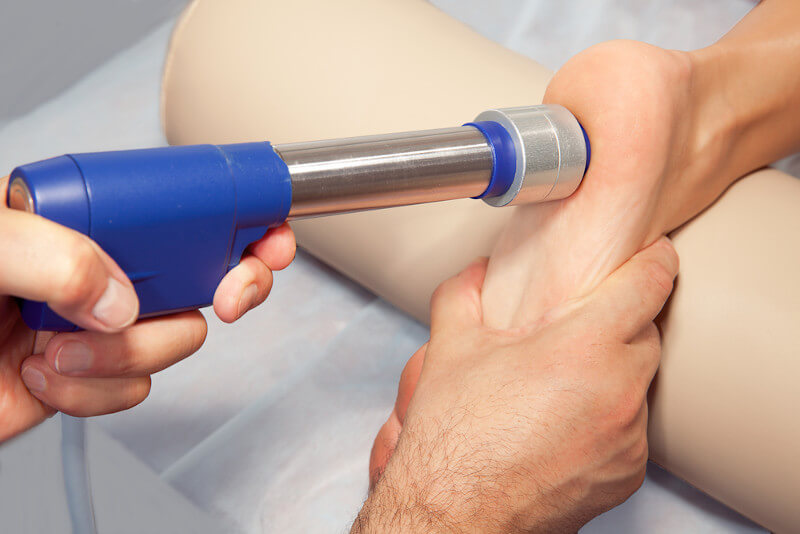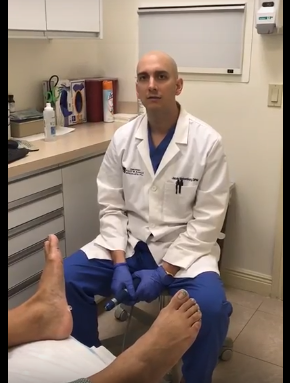Shock Wave Therapy:
Non-Surgical Treatment Option for Plantar Fasciitis
If you are suffering from stubborn plantar fasciitis and are not ready for surgery,
extracorporeal shock wave therapy (ESWT) has helped several patients accelerate the healing process and return to pain-free living. Since it is non-invasive, meaning that there is no instrument that has to penetrate the skin or any anatomy, many podiatrists consider ESWT to be a better treatment alternative as there is no risk of infection, nerve injury nor scarring involved following the procedure.
Because there are no surgical facility fees or anesthesia required, it is definitely considered more affordable and convenient than even minor surgical procedures that treat plantar fasciitis. Plus, unlike surgery, there is no downtime needed for each treatment and the side effects are minimal or even non-existent in most cases. Furthermore, this new FDA-approved, alternative treatment has reported an 85% patient satisfaction rate with the end results. This is a good percentage even compared to surgical statistics!
How Does Shock Wave Therapy Work?
By design, ESWT stimulates the body’s healing process by electronically inducing microtrauma to the tissue, which triggers increased blood flow and nutrient delivery to the affected area. While results and length of treatment will depend on the severity of the condition, patients tend to get the best results from a series of three or more treatments, which generally take 15 minutes each. While most patients start ESWT to treat plantar fasciitis, this therapy is extremely versatile; it can also be used for Achilles tendonitis and heel “spurs” alike.
ExtraCOPOREAL SHOCK WAVE THERAPY Techniques for Plantar Fasciitis
To administer ESWT, Certified Foot & Ankle specialists use sophisticated EPAT (extracorporeal pulse activation treatment) technology to deliver low frequency sound waves to the plantar fascia, or affected area of the foot. Depending upon what each patient can tolerate, the pulse intensity may need to be adjusted. Or, if the patient has extreme sensitivity to the pulsing sensation, local anesthesia can be used but it is rarely needed.

DURATION OF SHOCK WAVE THERAPY TREATMENTS
Often the benefits from EPAT are experienced after only three treatments or within four weeks of initiating therapy. In fact, some patients even report immediate relief after the treatment, although it can take two treatments to experience significant relief. Since the treatment eliminates pain and restores full mobility, it can noticeably improve a patient’s quality of life. Make an appointment today to find out more about this conservative treatment option.



